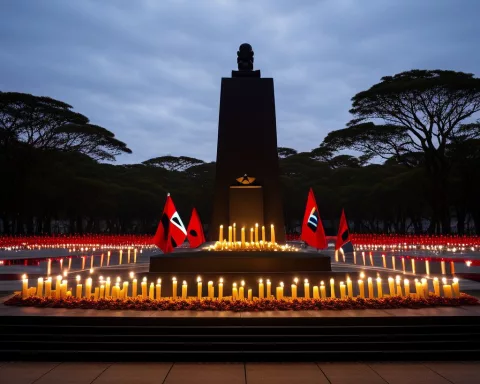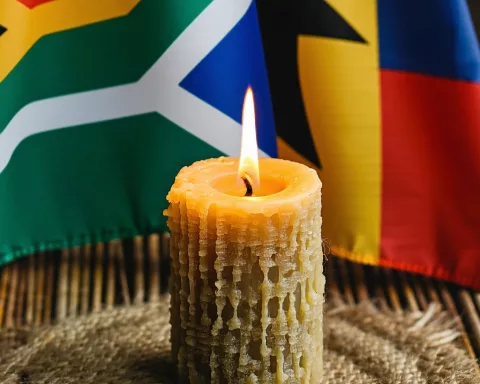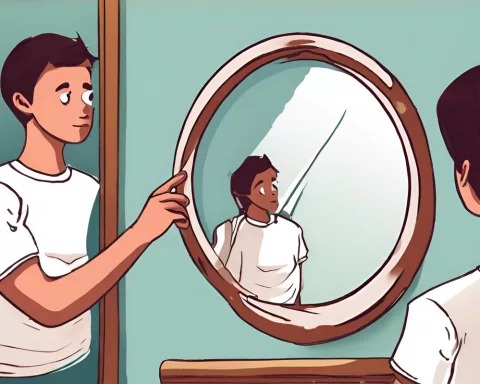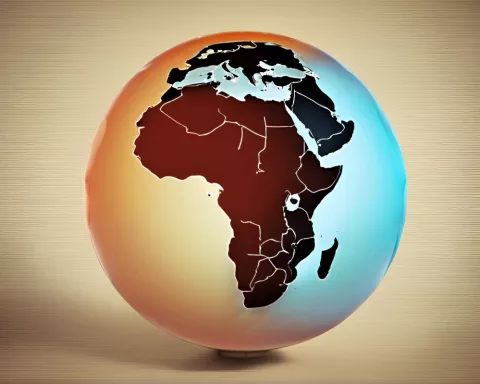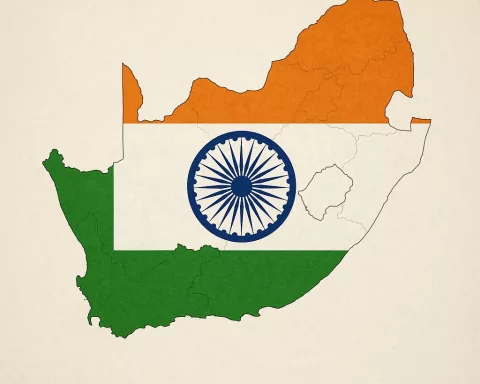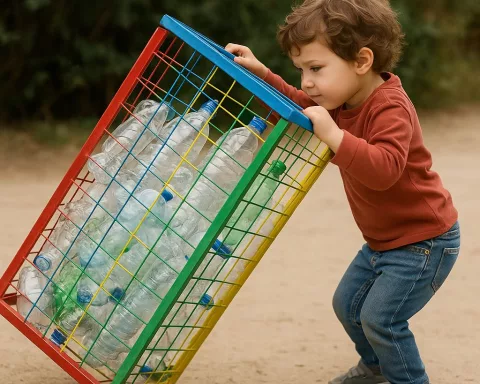The Southern African Development Community (SADC) is ending its military mission in the Democratic Republic of Congo (DRC), marking a new chapter in peacekeeping. This shift shows that leaders now believe in using diplomacy and humanitarian efforts instead of just military force to create lasting peace. After a tough year with many casualties, including 14 soldiers, SADC leaders gathered to discuss their next steps. They are committed to supporting the DRC through peaceful solutions, recognizing that true stability comes from addressing the roots of conflict and working together for a brighter future.
What does SADC’s withdrawal from the DRC mean for peacekeeping?
The Southern African Development Community (SADC) is shifting its strategy by withdrawing military troops from the Democratic Republic of Congo (DRC). This decision emphasizes the importance of diplomatic and humanitarian efforts for sustainable peace, recognizing that complex conflicts require multifaceted approaches.
Ending Military Engagement in the DRC
The Southern African Development Community (SADC) has resolved to end its military mission in the Democratic Republic of Congo (DRC). This momentous decision reflects a reassessment of their strategy to address the ongoing conflict in the region. On Thursday, during a virtual summit, regional leaders declared the phased withdrawal of troops as part of the SADC Mission in the Democratic Republic of Congo (SAMIDRC). This move follows a challenging year that saw significant casualties, including the loss of 14 South African National Defence Force (SANDF) soldiers.
The announcement came through a joint statement that signaled the conclusion of the SAMIDRC mandate and the initiation of a strategic pullback. “We terminated the mandate of SAMIDRC and directed the commencement of a phased withdrawal of SAMIDRC troops from the DRC,” the statement proclaimed. Months of intense fighting and numerous clashes between SAMIDRC forces and local rebel factions led to severe casualties, with the deaths of 14 SANDF soldiers, who were dispatched in December 2023 to enhance peacekeeping efforts, highlighting the mission’s high human cost.
Summit Deliberations and Strategic Reorientation
During the virtual summit, South African President Cyril Ramaphosa joined other regional heads of state and government to deliberate on strategies to quell the unrest in the DRC. Chaired by Zimbabwean President Emmerson Mnangagwa, the summit reiterated SADC’s unwavering commitment to supporting the DRC in its quest for peace and stability. This commitment aligns with the SADC Mutual Defence Pact of 2003, which emphasizes regional solidarity in protecting sovereignty, independence, and territorial integrity.
“We reaffirm our unwavering commitment to continue supporting the DRC in its pursuit of sustainable peace, security, and development,” the joint statement declared. Leaders expressed condolences to the families of the fallen soldiers from South Africa, Malawi, and Tanzania, whose troops participated in the mission. They also wished a swift recovery to the injured, with critically wounded South African soldiers recently repatriated and receiving treatment at 1 Military Hospital in Pretoria.
Though the withdrawal looms, SADC leaders remain resolute in their aim to establish enduring peace in the DRC. The focus will now shift to diplomatic and humanitarian solutions as the region continues to navigate the complexities of peacekeeping in one of Africa’s most volatile areas.
Historical Context and Future Implications
This development holds considerable historical significance, echoing past shifts in regional and international peacekeeping strategies. The phased withdrawal of SAMIDRC troops mirrors historical precedents where regional bodies reevaluated military interventions. For example, the United Nations faced analogous challenges during its operations in Bosnia in the 1990s, transitioning from military to diplomatic efforts due to the conflict’s complexity.
Moreover, SADC’s decision highlights the broader historical context of African regional organizations addressing internal conflicts. The African Union (AU) has frequently alternated between military and diplomatic solutions to manage conflicts in countries like Sudan and Somalia. These transitions often reflect an evolving understanding that peacekeeping necessitates multifaceted approaches, intertwining military, diplomatic, and humanitarian strategies.
Cultural and artistic responses to these conflicts offer additional insights. Wars and peacekeeping missions invariably inspire literature, art, and music that capture the human cost and the complex emotions involved. African artists, in particular, have documented such conflicts through various mediums, offering poignant critiques and reflections. The works of Nigerian author Chimamanda Ngozi Adichie and Congolese painter Chéri Samba, for instance, delve into the profound impacts of conflict on societies and individuals.
The Role of Afrofuturism and Sustainable Peacekeeping
Afrofuturism provides a unique perspective on these conflicts by envisioning futures where African societies have overcome their historical challenges. This movement, exemplified by artists like Sun Ra and authors such as Nnedi Okorafor, offers a hopeful narrative that contrasts with the often grim realities of war and conflict. It encourages a reimagining of Africa’s potential, blending cultural heritage with futuristic aspirations.
In this context, the SADC’s phased withdrawal from the DRC represents a moment of recalibration towards more sustainable and holistic peacekeeping approaches. It acknowledges that while military interventions have their roles, they must be complemented by robust diplomatic and humanitarian efforts. This multifaceted strategy aligns with broader trends in international peacekeeping, where building long-term peace increasingly involves comprehensive approaches.
The experiences of the SAMIDRC mission will undoubtedly shape future peacekeeping efforts within the region. Lessons learned from the DRC will inform new policies and strategies, fostering a nuanced understanding of the dynamics involved. This iterative process of learning and adaptation is crucial for the evolution of regional peacekeeping practices.
Navigating the Transition Phase
As SADC transitions from military intervention to diplomatic engagement, the region faces the challenge of ensuring that the gains made are not lost. The legacy of the peacekeeping mission will depend on the successful implementation of diplomatic, economic, and social initiatives that address the root causes of the conflict. This transition phase is critical, requiring concerted efforts from all stakeholders, including regional leaders, international partners, and the DRC government.
In summary, SADC’s phased withdrawal from the DRC marks a pivotal turning point in regional peacekeeping endeavors. It reflects a growing recognition of the need for comprehensive strategies that combine military, diplomatic, and humanitarian efforts. As the region navigates this transition, the lessons gleaned from the SAMIDRC mission will be invaluable in shaping future peacekeeping endeavors. The road ahead presents challenges, but with sustained commitment and innovative approaches, the goal of lasting peace in the DRC remains within reach.
FAQ on SADC’s Withdrawal from the DRC
What is the significance of SADC’s withdrawal from the DRC?
SADC’s withdrawal signifies a strategic shift from military engagement to prioritizing diplomatic and humanitarian solutions for achieving lasting peace. This change reflects an understanding that complex conflicts require multifaceted approaches that address the root causes of unrest.
Why did SADC decide to end its military mission in the DRC?
The decision to end the military mission was made during a virtual summit where leaders recognized the high human cost of the mission, including the loss of 14 soldiers. The leaders agreed that sustainable peace could be better achieved through diplomatic efforts and humanitarian initiatives instead of military force.
What were the key events leading up to the withdrawal?
The withdrawal followed months of intense fighting and clashes between SADC forces and local rebel factions. The decision was announced after a virtual summit attended by regional heads of state, including South African President Cyril Ramaphosa and Zimbabwean President Emmerson Mnangagwa, who emphasized the need for a reassessment of strategies in the DRC.
How does this decision align with SADC’s historical commitments?
SADC’s decision to withdraw aligns with the SADC Mutual Defence Pact of 2003, which emphasizes regional solidarity in protecting the sovereignty and territorial integrity of member states. The organization is committed to supporting the DRC in its pursuit of peace and stability, reflecting a long-standing dedication to collaborative peacekeeping.
What implications does this withdrawal have for future peacekeeping efforts?
The withdrawal highlights the need for a nuanced understanding of peacekeeping that combines military, diplomatic, and humanitarian strategies. The lessons learned from the SAMIDRC mission will inform future peacekeeping policies and approaches, as SADC aims to ensure that gains made are not lost during the transition phase.
How does Afrofuturism relate to SADC’s approach to peacekeeping?
Afrofuturism offers a hopeful narrative that envisions African societies overcoming historical challenges. This perspective aligns with SADC’s shift towards more sustainable peacekeeping methods, emphasizing the importance of cultural heritage and futuristic aspirations in crafting comprehensive strategies for peace.


